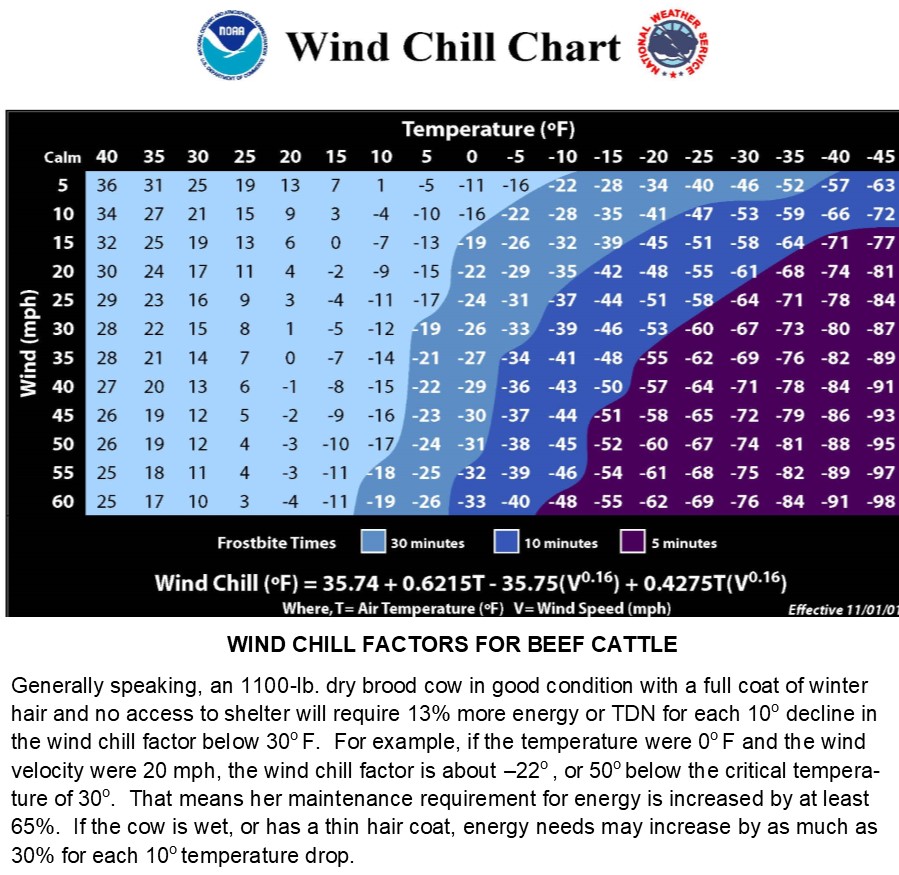Large numbers of livestock may be killed in winter storms. Wind coupled with severe or prolonged cold weather causes additional stress on livestock, increasing their need for food, water, and shelter. Pre-planning for winter storms by addressing these issues can help protect your livestock during severe winter weather.
Provide Shelter
Move stock, especially the young, into sheltered areas. Windbreaks, properly oriented and laid out, or timber covered lowlands might offer better protection for range livestock than most shed-type shelters, which may overcrowd and overheat livestock, causing subsequent respiratory disorders.
Never close livestock shelters tightly, since stock could suffer later from pneumonia or other related diseases.
Adequate shelter is also important to animals because their extremities are subject to frostbite and freezing. The loss of ears or tails could be of little economic significance, but severe cold and lack of shelter will frequently cause the loss of limbs as well.
Provide Extra Feed
During severe or prolonged cold weather, animals need extra feed to provide body heat and to maintain production weight gains. Studies indicate that supplemental feed energy, in the form of a high-quality hay or grain, is needed when the wind chill factor becomes low. As an example, if temperature is 0°F and there is a 20-mile-per-hour wind, the wind chill factor becomes – 22°F. This means the cows should be fed about 65% more energy than if the temperature was 32°F with little or no wind. Digestibility also decreases about 1% per 10°F fall in temperature.
There are several other factors that determine the need for additional feed including hair coat type and humidity. Windbreaks, either natural or constructed will naturally reduce the energy wasted in extreme low temperatures and/or high winds, but it will not circumvent the need for some increased energy consumption by the cow during these periods. A forage ration that maintains an animal during the summer may not carry it through the stress of prolonged or severe cold. Haul extra forage and grain to feeding areas before the storm arrives. If the storm lasts over 48 hours, emergency feeding methods may be required. Pelleted commercial protein concentrates make good emergency feed.
Unless you have a source of emergency power, mechanized feeders may be inoperable during power failures.

Provide water
Use heaters in water tanks to provide livestock with enough water. Maintain a source of thawed water at all times if possible. For most livestock, water temperatures of 40o – 65o are preferred. Unfrozen, but very cold, water may not be consumed by animals. Autopsies of livestock killed during winter storms show that the cause of death is usually dehydration, not cold or suffocation. Most livestock cannot lick enough snow to satisfy their water requirements.
NOTE: This article may be downloaded and distributed as a PREPnote, found in Educator/Trainer Resources.
If you need more information contact: inprepared@purdue.edu.
© 2020 Purdue University | An equal access, equal opportunity university | Extension Intranet
615 West State Street, West Lafayette, IN 47907-2053
If you have trouble accessing this page because of a disability, please email us at extension@purdue.edu.

